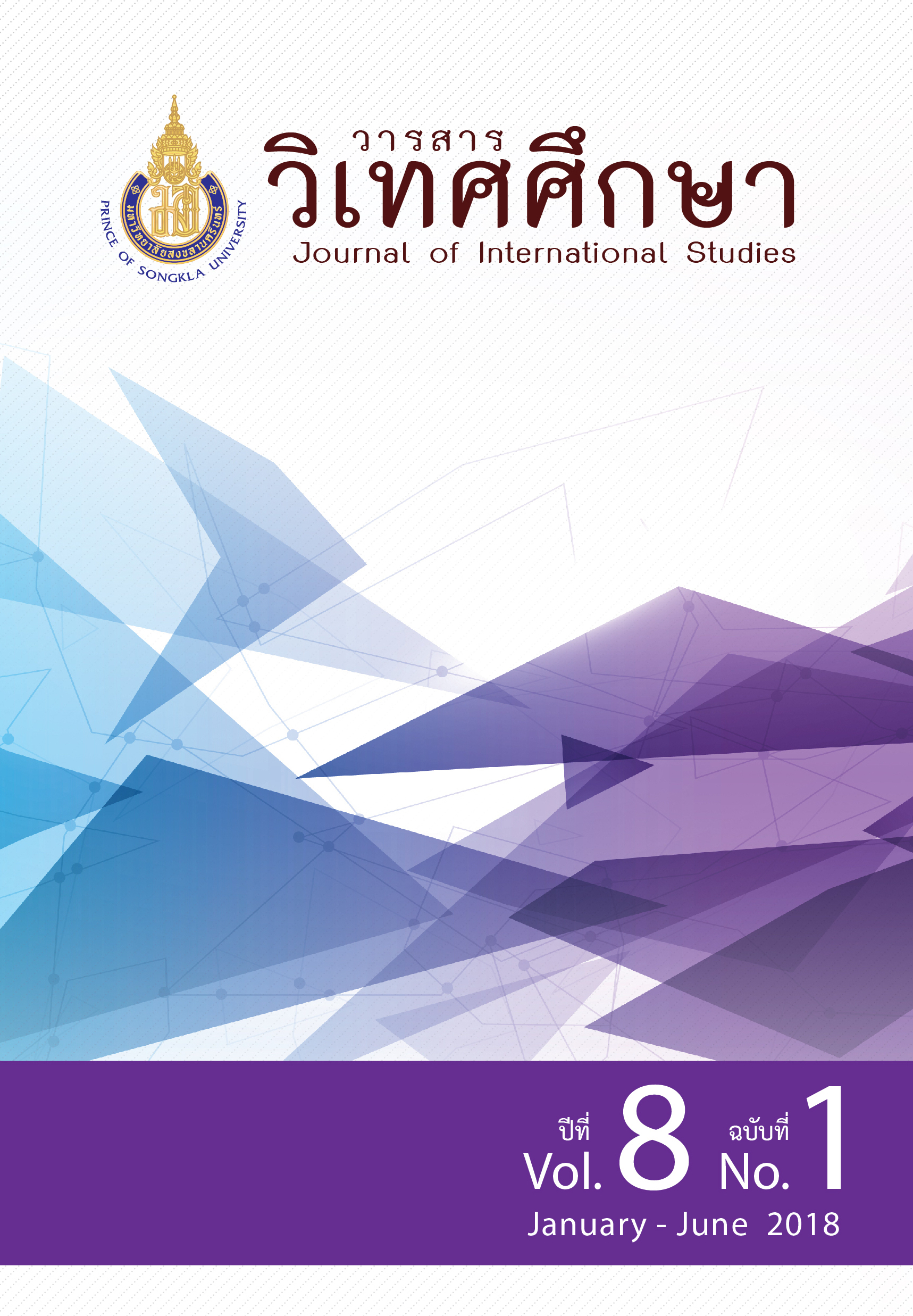The Polysemic of 잡다 /ʧaptʼa/ In the Korean Textbook for Foreign Learners
Main Article Content
Abstract
The objectives of this paper are 1) to study the frequency of the usage of polysemic word 잡다/ʧaptʼa/ and 2) toprioritize teaching plan forpolysemic word. This study collects the data from secondary resources (i.e. Dictionary of Semantic Frequency and 37 selected textbooks of Korean from 6 presses). The words 잡다 /ʧaptʼa/ occurring in the text are all collected to analyze its frequency, contribution, context, and meanings. The frequency of usage is sorted by descending order.
The result of this study reveals that the word 잡다/ʧaptʼa/ polysemically consists of 25 meanings. Only 13 meanings are frequently used in the resources, and necessary for students. However, 12 meanings do not play an important role for their learning. In terms of the priority of teaching arrangement, this study finds that 4 meanings, which share the semantic concept, should be taught in primary level. 6 meanings should be provided in mediate level. In advanced level, only 3 meanings are less frequently used.
Article Details
Statements and opinions expressed in articles herein are those of the authors and do not necessarily reflect the position of the editors or publisher.
Article, information, text, image, etc. which are published in Journal of International Studies, belong to Journal of International Studies. If anybody or any organization would like to use part or whole of them, they must receive written permission from Journal of International Studies before usage.
References
คยอง อึน ปาร์ค. (2554). ปรากฏการณ์พหุนัยของคำว่า 가다 /gada/ ในภาษาเกาหลี เปรียบเทียบกับคำว่า ไป ในภาษาไทย : การศึกษา ตามแนวภาษาศาสตร์ปริชาน. วิทยานิพนธ์ปริญญาดุษฎีบัณฑิต,
มหาวิทยาลัยธรรมศาสตร์.
ราชบัณฑิตยสถาน. (2546). พจนานุกรมฉบับราชบัณฑิตยสถาน พศ. 2542. กรุงเทพฯ: นานมีบุ๊คส์พับลิเคชั่นส์.
อรพรรณ ฤทธิ์มั่น และ บัลลังก์ โรหิตเสถียร. (10 มีนาคม 2559). หารือกับเอกอัครราชทูตสาธารณรัฐเกาหลี. ข่าวสำนักรัฐมนตรี. สืบค้นเมื่อ 5 กันยายน 2560 , สืบค้นจาก Journal of International Studies Vol. 8 No. 1 : January – June 2018 วารสารวิเทศศึกษา ปีที่ 8 ฉบับที่ 1 มกราคม - มิถุนายน 2561
Lakoff, George. (1987). Women, Fire, and Dangerous Things : What Categories Reveal about the Mind. Chicago : The University of Chicago Press.
Lakoff, George, and Johnson, Mark. (1987). Conceptual Metaphor in Everyday Language. In Mark Johnson [ed.], 286-325.
고경태. (2008). 한국어 동사 교육 연구: 동사의 통사 및 의미 교육을 위한 패턴(pattern) 설정을 중심으로.
박사논문, 고려대학교, 서울.
국립국어원. (1999). 표준국어대사전. 서울: 두산동아.
국립국어원. (2002). 현대 국어 사용빈도 조사 보고서. 국립국어원.
낙콩 사시완. (2013). 한국어교육을 위한 한국어와 태국어의 다의어 대조 연구: 동사 ‘먹다’를 중심으로. 석사학위논문, 경희대학교, 서울.
문금현. (1998). 외국어로서의 한국어 관용표현의 교육, 이중언어학,15(1), 201-233.
문금현. (2006). 한국어 어휘 교육을 위한 다의어 학습 방안: 동사 '보다' 를 중심으로, 이중언어학, 30, 143-177.
서상규 외 (2006).외국인을 위한 한국어 학습 사전. 서울: 신원프라임.
서상규. (2014). 한국어 기본어휘 의미 빈도 사전. 서울: 한국문화사.
연세대학교 언어정보개발연구원.(2008). 연세한국어사전. 두산동아.
윤경원. (2007). 한국어 다의어 의미 항목별 교육의 필요성 -명사 ‘말’을 중심으로, 언어사실과 관점, 29.
조남호. (2003). 한국어 학습용 어휘 선정 결과보고서, 국립국어연구원, 서울
한영균. (2006). 한국어 어휘 교육•학습 자료 개발을 위한계량적 분석의 한 방향, 어문학, 94, 119 ~ 146


